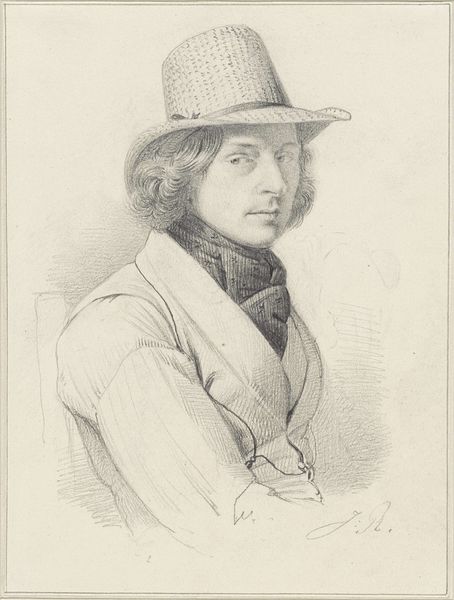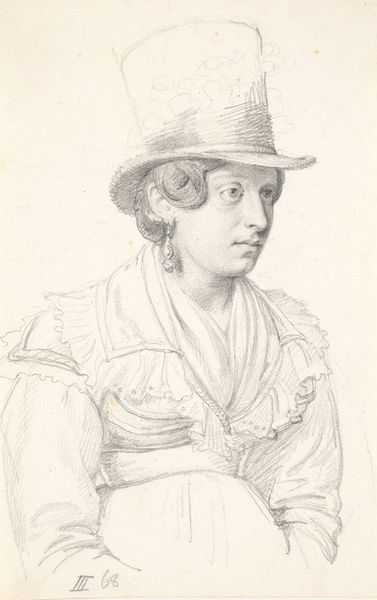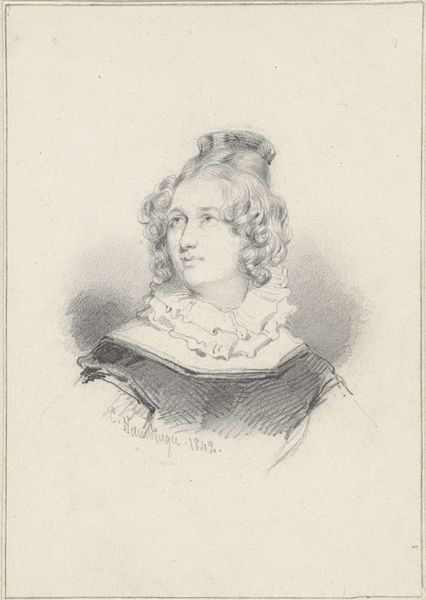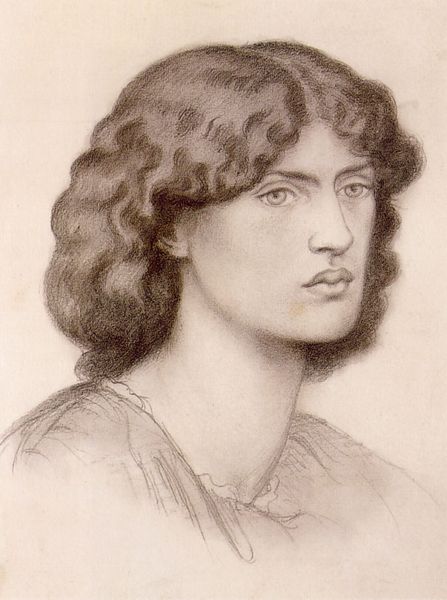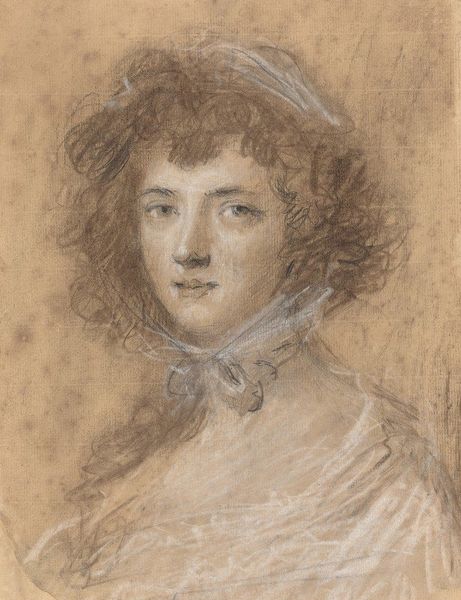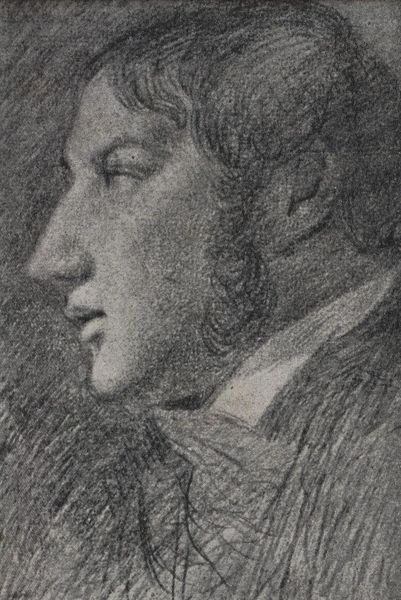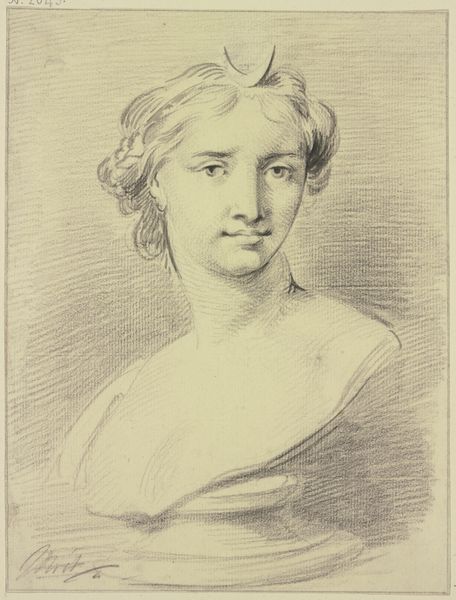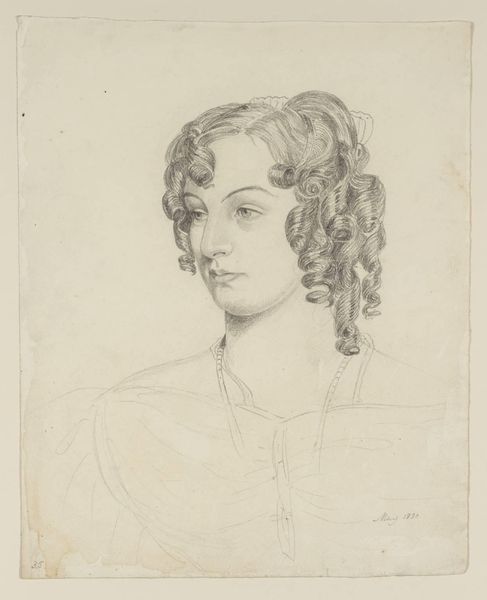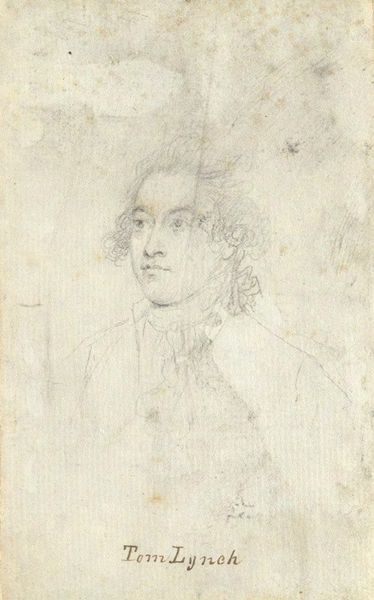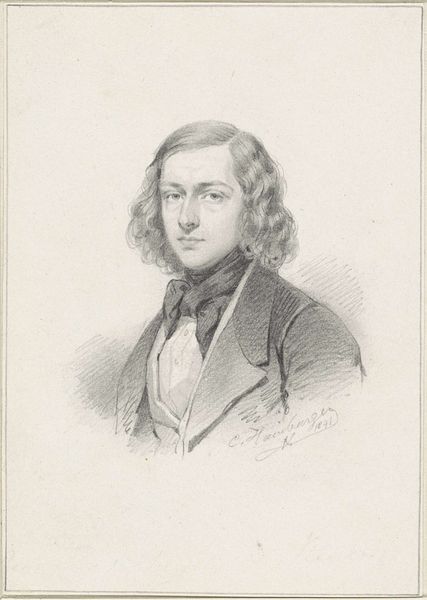
drawing, ink, graphite
#
portrait
#
drawing
#
self-portrait
#
charcoal drawing
#
ink
#
romanticism
#
graphite
#
academic-art
Dimensions: 8 1/8 x 7 3/8 in. (20.6 x 18.7 cm)
Copyright: Public Domain
Editor: Here we have Samuel Morse's "Head of a Man" from 1840, crafted with ink, graphite, and charcoal. It strikes me as a very introspective portrait. What stands out to you in this piece? Curator: The labor embedded within the delicate hatching is quite captivating. Considering Morse's other work—his contributions to the telegraph—how might we view this drawing in relation to his pursuits of communication and the distribution of information? Editor: That's fascinating! I hadn’t considered it in the context of his invention. How does the material, the ink and charcoal, play into that? Curator: The use of graphite, ink, and charcoal – materials readily available and relatively inexpensive at the time – speaks to a democratization of image-making. It allows for reproduction, if not on the scale of the telegraph, then certainly within a more accessible social sphere. Notice the romantic elements in the subject's hair, yet it’s an unfinished drawing… what labor was Morse prepared to commodify or make available for the public, and where does it end? Editor: So you are thinking about what making available would have meant at the time for an artist? Curator: Exactly. It’s not simply a question of representation, but of production, of the social relations that enabled and constrained artistic practice at this particular historical juncture. How the availability of certain media shaped the type of labor possible at this point and in relation to who may consume it. Editor: This reframes my perception entirely. I’m seeing this piece not just as a portrait, but also a physical record of the labor involved in art making. Curator: Indeed! By exploring the material conditions and the social context, we gain a much richer appreciation of the work. Editor: This gives me a fresh perspective! Thank you!
Comments
No comments
Be the first to comment and join the conversation on the ultimate creative platform.
